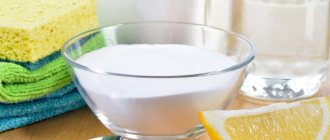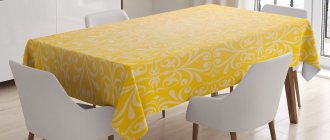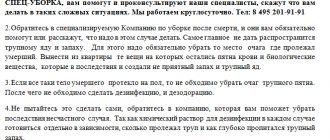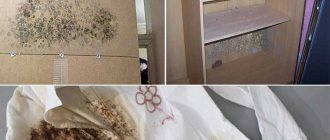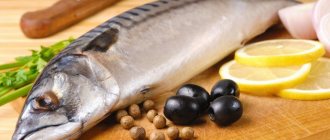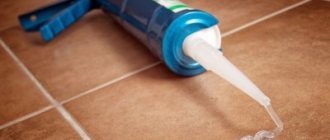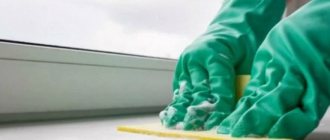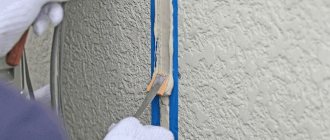A cutting board is an integral part of every kitchen. The most common are wooden materials: they are affordable, easy to use, gentle on the knife blade and environmentally friendly. But wooden surfaces have an unpleasant problem that every user faces: such products absorb odors and particles of the products being cut, and sometimes it is difficult to get rid of them. If used incorrectly and over time, wood planks are also prone to mold. To remove unwanted odors from the surface of the product, you can use one of the following methods.
Important little things
Follow these guidelines when using cutting boards:
- If the product is cracked or a persistent, indelible mold smell appears, it should be replaced;
- Do not wipe the board with a cloth towel: use a paper towel or let it dry naturally;
- Choose products made from compressed wood fiber: they minimally absorb odors and have all the advantages of classic wooden surfaces;
- Glass cutting surfaces do not absorb odors, but their use has a detrimental effect on the knife blade: it quickly wears out and becomes dull;
- Plastic is no less susceptible to contamination and stench than wood and can be unsafe for health;
- Wash the board immediately after use;
- It is advisable to have several items for cutting different products: meat, fish, sliced bread, vegetables, etc.
You can remove odor from a wooden kitchen cutting board using the simplest means at hand, but in addition, you must adhere to the rules of use: this will not only reduce the problem of unpleasant odor, but also prevent the spread of unwanted germs and keep your kitchen clean.
Ways to eliminate odor on a cutting board
A common question that worries housewives is how to get rid of the smell on the cutting board. Women do not even suspect that the necessary funds, as a rule, are available at home. Housewives often complain that after cutting the board stinks of fish and they cannot wash off the smell. In this case, an aqueous solution of lemon juice or vinegar will help. Before cleaning the cutting board, you need to moisten it with the prepared product and leave for 10-15 minutes. It is recommended to treat the surface with the same solution before cutting onions, garlic and fish.
A solution of baking soda helps clean a plastic cutting board from foreign odors. After applying to the surface, you need to wait a while and then rinse with water. To eliminate unwanted odors, it is also effective to wipe a plastic board with a vinegar solution. Then the surface must be rinsed well with water. Coffee grounds, charcoal, and salt are considered effective cleaning agents for wooden cutting boards. They help clean the surface and remove the smell of fresh meat, garlic, onions, fish and mold.
We use vinegar solution
Mix vinegar with water. Pour the resulting solution into a spray bottle. Spray it on areas of furniture that smell like cigarettes.
Wipe off excess liquid with a soft cloth. Then air dry the furniture by opening the vents or windows in the room.
If you were unable to eliminate the tobacco smell the first time, repeat the procedure until the stench disappears. Vinegar is excellent at absorbing unwanted odors.
Many people who love to cook admit that they hate washing dishes. This is understandable: after all, cooking is a creative, interesting and exciting process. But subsequent cleaning is a purely mechanical task that takes time and effort. Often, after cutting some products, it takes a long time to get rid of their smell, which is literally absorbed into the wooden boards and haunts the owner for a long time.
Use grated apple
If after some time of use the cutting board begins to smell unpleasant, this is not a reason to buy a new one. You can get rid of the unpleasant aroma using ordinary apples, and their variety does not matter.
You need to grate a few apples, spread the resulting pulp over the surface of the board, and leave for 5 minutes. and simply rinse with water. There is no need to leave the apples for a longer time; the iron will oxidize and dark marks will appear on the surface of the board.
How to clean a pan from a fishy smell
All the described methods of dealing with fishy aroma are suitable for washing pots. The only inconvenience: if the container is large, rubbing it with powder is time-consuming and labor-intensive. And coatings such as ceramic do not tolerate the use of abrasives.
For high-quality processing of the pan, it is better to use soaking or boiling with soda, salt, or mustard solution. The procedure is the same:
- Wash the container thoroughly with laundry soap and gel.
- Pour the powder into the bottom and add water. Ratio 1-2 tbsp. spoons per 1 liter of water.
- Leave to soak for half an hour or boil the solution for 5-10 minutes.
- Drain the liquid and rinse the pan with running water.
- At the end, it is advisable to pour boiling water over the vessel, a weak solution of vinegar, or wipe with a lemon wedge.
Ceramic containers should not be heated with aggressive agents. You can simply soak them in hot water, then rinse and dry with a napkin.
Another way to eliminate odors:
- Heat an empty pan on the stove.
- Pour in the wet brewed tea leaves.
- Cover with a lid and leave for an hour.
- Wash and dry the pan.
What will it take to clean the board?
It is extremely important to clean the boards immediately after you finish cooking. The longer wooden boards remain dirty, the more food juices are absorbed into them. And, of course, the smell will be more persistent.
For cleaning you will need the following:
- a small scraper or stiff brush;
- woven household napkin or thick sponge;
- dishwashing liquid;
- warm water.
You can also use a thick household sponge to clean the board.
Cleaning pots correctly
Fish soup, fish soup, baked and/or jellied fish - all this is incredibly tasty, and in order not to spoil the mood with a long struggle with fish amber, you can try one of the following methods:
- Soda + water - clean the walls and bottom of the dish in which the fish was boiled/fried with a damp cloth. Place 2 tbsp at the bottom of the container. regular soda. Pour a liter of boiling water and let the water evaporate almost completely, while keeping the lid tightly closed.
- Bay infusion - boil 3-5 bay leaves in a pre-cleaned pan in lightly salted water for 1.5 hours
- Dill seeds against odor - if after the initial wash the smell of fish does not deign to go away, then it is worth driving it away with dill seeds. Wipe the walls and bottom of the dish dry. Sprinkle 100 grams of dill seeds and let them heat well (but do not burn!). Pour a glass of boiling water over the hot seeds and continue boiling for 3 minutes.
- Lemon - cut 1 large citrus into 5-7 parts so that the juice stands out. Sprinkle with a pinch of salt or mustard, pour in 0.5 liters of boiling water and simmer over low heat for 12-15 minutes.
- Pour dry mustard (1 tbsp) into the bottom of a greasy dish. Add 2 tsp. 9% vinegar (it can be replaced with 5 grams of ammonia). Evaporate this entire mixture in 2 liters. boiling water for 30-40 minutes.
The smell of fish in a frying pan - how to remove it
We throw the remains of the fish (offal, fins, bones, tail) straight into the trash, wrapped in a foil bag. After frying fish, first rinse a frying pan without a Teflon coating with cold water, then with warm water and a small amount of dishwashing liquid. To remove the strong fishy smell in a frying pan, pour water with vinegar and dishwashing liquid into it and heat it. The same can be done with a burnt frying pan.
Fill the Teflon frying pan with hot water, add salt, bring to a boil and set aside for a while. It should be washed without using dishwashing liquid to remove the smell and not damage the coating.
Treat with hydrogen peroxide
Hydrogen peroxide is an effective independent remedy in the fight against grease, odors, stains and some types of microorganisms.
Boil 0.5 liters of water, dissolve hydrogen peroxide in it and wash the cutting board with the resulting solution.
No matter how ideal the housewife is, she will not be able to avoid dirtying the cutting board. Of course, you can just buy a new one every time, but this is not necessary, because cleaning the old one is not difficult at all.
- Author: iarriba
Rate this article:
- 5
- 4
- 3
- 2
- 1
(1 vote, average: 5 out of 5)
Share with your friends!
General rules for removing fish smell in an apartment or kitchen
Frying fish sometimes creates a very strong smell, mainly due to excessively heated fat. Therefore, you need to monitor the correct temperature for frying the fish and prevent the oil from smoking. Ventilating the kitchen may not be effective. There are very simple ways to quickly get rid of too strong a smell when cooking, frying or baking fish:
- Before frying the fish fillets, add grated Parmesan or other cheese to the breading. The smell became less intense and the taste improved.
- Before frying, oily fish can be rubbed with lemon juice. You need to insert a slice of lemon into the mackerel. When frying pollock, hake, capelin, add fresh bay leaf to the pan.
- When frying or cooking fish, add fresh or dried ginger.
- Cooked food will not have a strong fishy smell if you add a little sesame oil.
- The strong smell of fried fish in the kitchen can be reduced by boiling water with a spoonful of cinnamon or a large bay leaf at the same time. Do not cover the pan when boiling.
- The smell in the kitchen after frying fish will be reduced by burning a large fresh bay leaf on the plate.
- The pungent smell of fish fried in an apartment will be significantly reduced by heating water with vinegar and briefly boiling water with lemon or orange zest in an open frying pan.
- A good way to deal with unwanted kitchen odors is to brew strong coffee and bake quick cinnamon cookies. A pleasant, relaxing aroma will spread throughout the apartment and remove the unpleasant fishy aroma.
Additional tips and tricks for getting rid of unpleasant odors
Always test the cleaning solution on a small, hidden area of the surface first to ensure it is safe.
It is important to dry the wood quickly. Always wipe it dry as water may cause it to crack or warp.
If the wood is made from particle board or plywood (as cabinets and other furniture are often made from), it has likely been coated with pesticides and contains formaldehyde adhesives. If the smell does not go away, it is quite possible that this is the cause, and to get rid of the problem, a complete replacement of the wood will be required. You can control the odor by keeping a deodorizer (such as a bowl of baking soda) in your cupboard at all times and replacing it regularly.
Found a violation? Report content
Wood cleaning instructions
For general cleaning of wood cabinet surfaces, use dishwashing liquid. Dip the rag into the soapy water, wring it out so it doesn't drip, and wipe the surface of the wood. Wipe the area with a damp cloth that has just been dipped in water, then blot the wood with a dry cloth. To save time, combine steps 1 and 2 by adding a little white vinegar to the soapy water.
Mix one part white vinegar with four parts water. Place the solution in a spray bottle and spray the wood. Wipe the area with a damp cloth soaked in water. After this, blot the wood dry.
Another way to disinfect wood is to use 3% hydrogen peroxide. Pour it into a spray bottle and spray the tree. Wipe the area with a damp cloth soaked in water, then blot the wood with a dry cloth.
After cleaning, leave the cabinet door open until the wood is completely dry. If any odor remains after the wood has dried, leave a bowl filled with white vinegar or coffee grounds next to the wood or on one of the shelves overnight with the cabinet door closed. Keep in mind that although the coffee grounds will remove the odor, the coffee smell will remain in its place, while the vinegar smell will disappear. Repeat this process until the odor is completely removed.
Another option for deodorizing wood is to sprinkle baking soda on it. Leave it overnight, then sweep or vacuum it.
